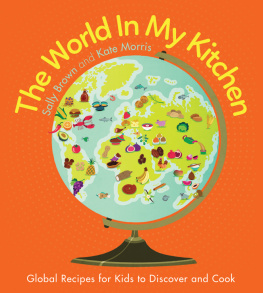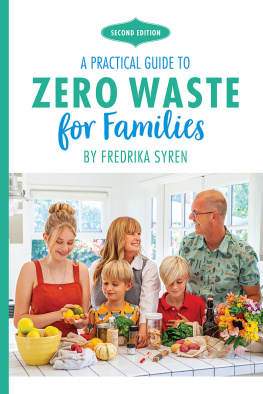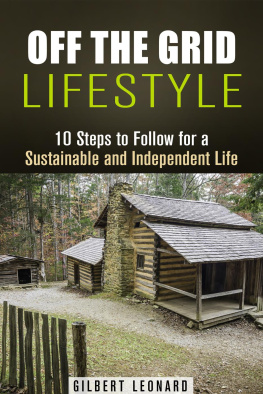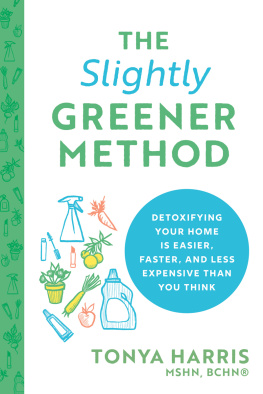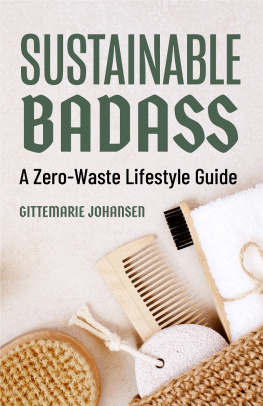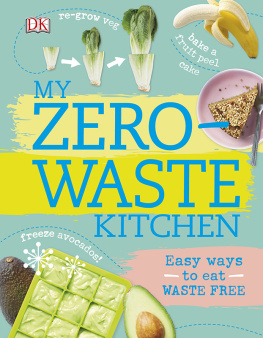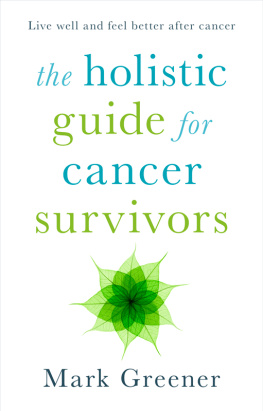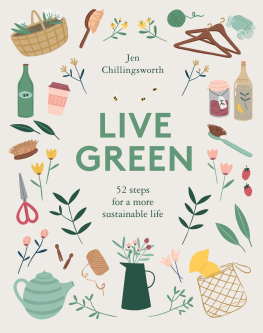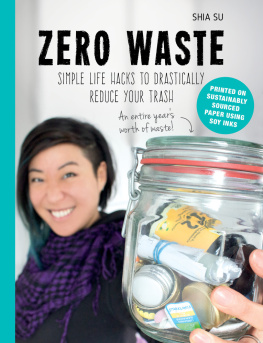All rights reserved. No part of this book may be reproduced or modified in any form, including photocopying, recording, or by any information storage and retrieval system, without permission in writing from the publisher.
INTRODUCTION
Unfortunately, we are living in a time where a linear economy is the norm - where raw materials are transformed into single use products and thrown away. It is estimated that around 50% of plastic is used just once before being discarded (Plasticoceans.org, 2021). This 'throwaway' culture has been causing destruction to our wildlife, our waters and our health, and yet we are still being convinced that convenience is what we need.
If we watch the adverts on television and see the ads that pop up when scrolling through social media, nine times out of ten they are telling us we need something because what we have already isn't good enough. We NEED the latest new gadget, even if our old one is working perfectly fine because the new model has a few more megapixels on the camera, or we NEED to have disposable cutlery at our party on Saturday night because washing up is an inconvenience.
What we are failing to realise is that 'away' does not exist. When we throw something 'away' it has to go somewhere. And the problem is, where things are constantly being made, used and put in the bin, we are piling up a HUGE amount of waste - more than the planet can handle. The majority of this waste doesn't get recycled, but ends up in landfill, or worse, in the sea where it kills our marine life, damaging the environment for many years to come.
It has also become normal for us to use products that contain harsh chemicals in our homes and on our bodies. This not only has an adverse effect on our health, but is also damaging to the environment and our precious ecosystems; the consequences of which are yet to be fully understood.
Here are some scary facts about plastic waste: ( Plasticoceans.org , 2021)
- Less than 9% of all plastic gets recycled
- 10 million tons of plastic are dumped in the ocean every year
- 1 million marine animals are killed annually by plastic pollution Humans eat over 40 pounds of plastic in their lifetime
So, How Can I Help?
A lot of people have the opinion that there is "no point trying because one person on their own is not going to make a difference". I can completely understand this mindset because I used to have it myself. The truth is, there are so many others out there that are facing the same dilemma. If everyone made a small change here and there, change would happen!
There is also a misconception that living an eco-friendly lifestyle will break the bank. The truth is, a lot of the alternatives out there don't have to cost a penny and can actually save you money in the long run!
I have written this ebook to show you how easy it can be to make changes to your lifestyle; changes that not only help the environment, but which I am confident will also have a positive effect on you and your family's health.
This is your go-to guide which you can refer to whilst on your journey to greener living. It is, in effect, your 'Eco-Pal'.
How Do I Get Started?
As much as I'm sure we'd all like to, we won't go straight to being 100% plastic free overnight. It is a journey which isn't always an easy one. There are likely to be hurdles along the way, but we can do this! Every small change makes a difference. Below are some tips to help you get started on reducing your usage of single use plastics:
- Start with the easy stuff - things that don't affect your habits at all.
- Look at rooms inside your home and see where you use single use plastic (check out the rest of the book for things you can change in each area of the house and other areas of your life). Check out The Ultimate Plastic Free Project if you want a tool to help you do this.
- When you've established your list, you don't have to go out and buy replacements for all of it straight away. Start small and work your way up.
- The most important one - Don't throw away all of your plastic items that can still be used to buy a plastic free alternative!
- Before you swap, use up what you have or reuse/repurpose, before buying new wherever possible.
In this book, I have included links to a variety of product examples and relevant websites for your reference. I hope this helps. Enjoy reading!
KITCHEN
First things first - think of all of the things that are connected to your kitchen. These are the things I can think of: Purchase the food that you store in your kitchen, prepare and cook meals, wash up/clean dishes in a dishwasher, clean the kitchen, laundry, use a tumble dryer, use kitchen roll ... This isn't an exhaustive list. I have gone through each of these sections below:
Shopping for Food
Going back to the convenience thing, it has become the norm to just pop to the supermarket to get everything we need for the week's food shop in one go. I do see the appeal, but this is a culture which you may want to change as you become more environmentally conscious; one that may also save you some money!
Shop Seasonal
Shopping for fruit and vegetables that are in season means that you eat foods when they are naturally ready to harvest. This not only saves CO2 emissions as the food then doesn't have to be shipped in from all over the world, but it also tends to be cheaper and tastes better as it is fresher. What's not to like with this swap?
To help you plan your meals, check out Hubbub.org which tells you what food is in season each month. (Hubbub.org, n.d.)
Support Local Businesses
If you have local greengrocers, farmers markets, and farm shops, try to shop for your groceries in these as it then keeps money in your local economy instead of giving your money to large corporations. Plus, it is then supporting small businesses who,
especially during the current climate with the COVID pandemic, might need the money more than your local supermarket.
Also, if you have a local refill store near you, these shops tend to stock everything from refillable body wash and shampoo, to laundry detergent, to cereals and pasta. Just take your containers such as glass jars, reused plastic containers and bottles, and reusable shopping bags, and just fill them up with what you need. This eliminates the packaging waste which in most supermarkets, is plastic.
Buy Loose Fruit and Vegetables
Whether you choose to shop in your local greengrocers or at the supermarket, most places are now starting to offer more and more loose fruit and vegetables. Hopefully in the near future, it will become the norm and it will be unusual to see pre-packed groceries.
You don't need to use the single use plastic bags that supermarkets provide. You can either make up a produce bag to use if you're feeling crafty out of an old pillow case or some material that you have around the house, or here you can find some ready made alternatives. Use these to buy your loose fruit and vegetables.
If you have to buy fruit and vegetables in plastic packaging, some supermarkets are now accepting these plastic bags in their recycling points for carrier bags. My local supermarket accepts the following so it's worth double checking what yours will accept.
- All carrier bags
- Bread bags
- Cereal bags
- Bags and wrappings used for fruits, vegetables, salads and flowers
- Bottle and can multipack wrapping


